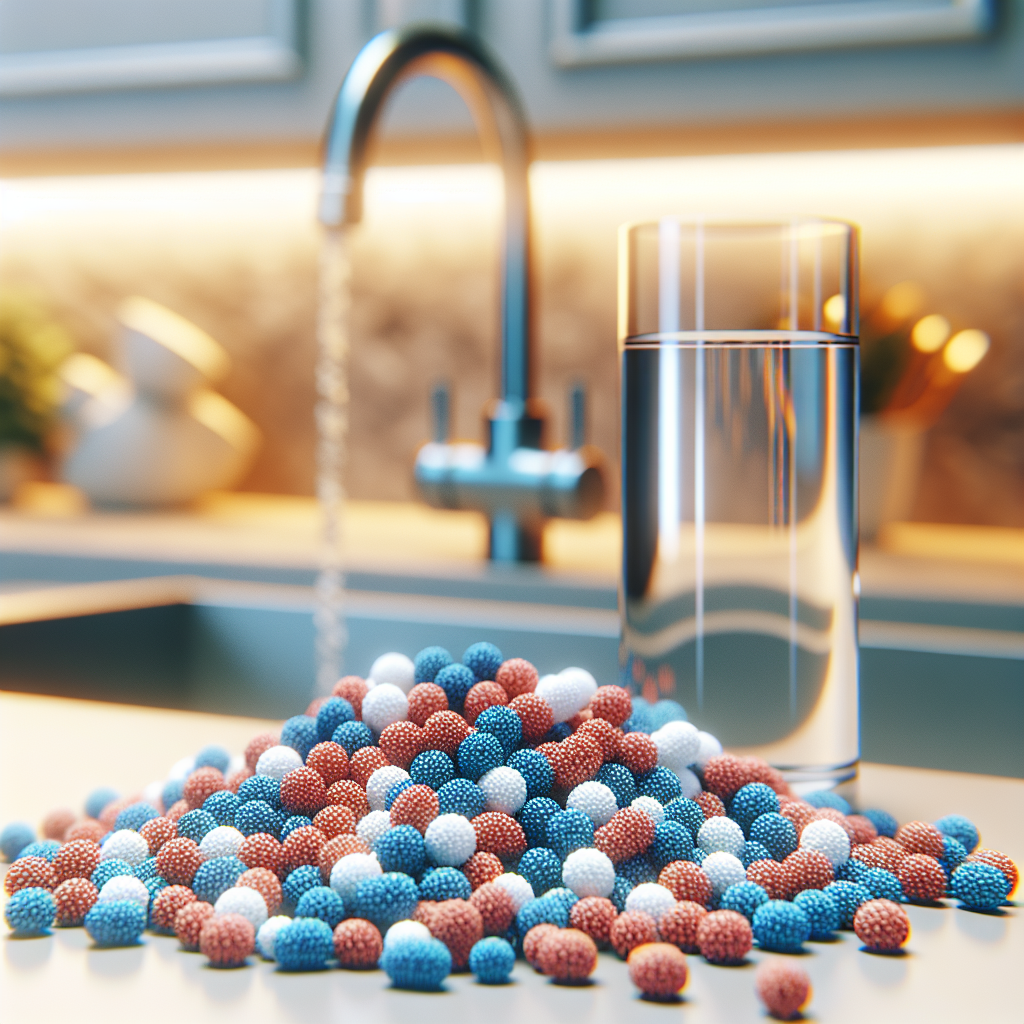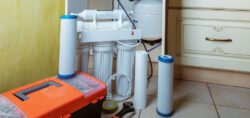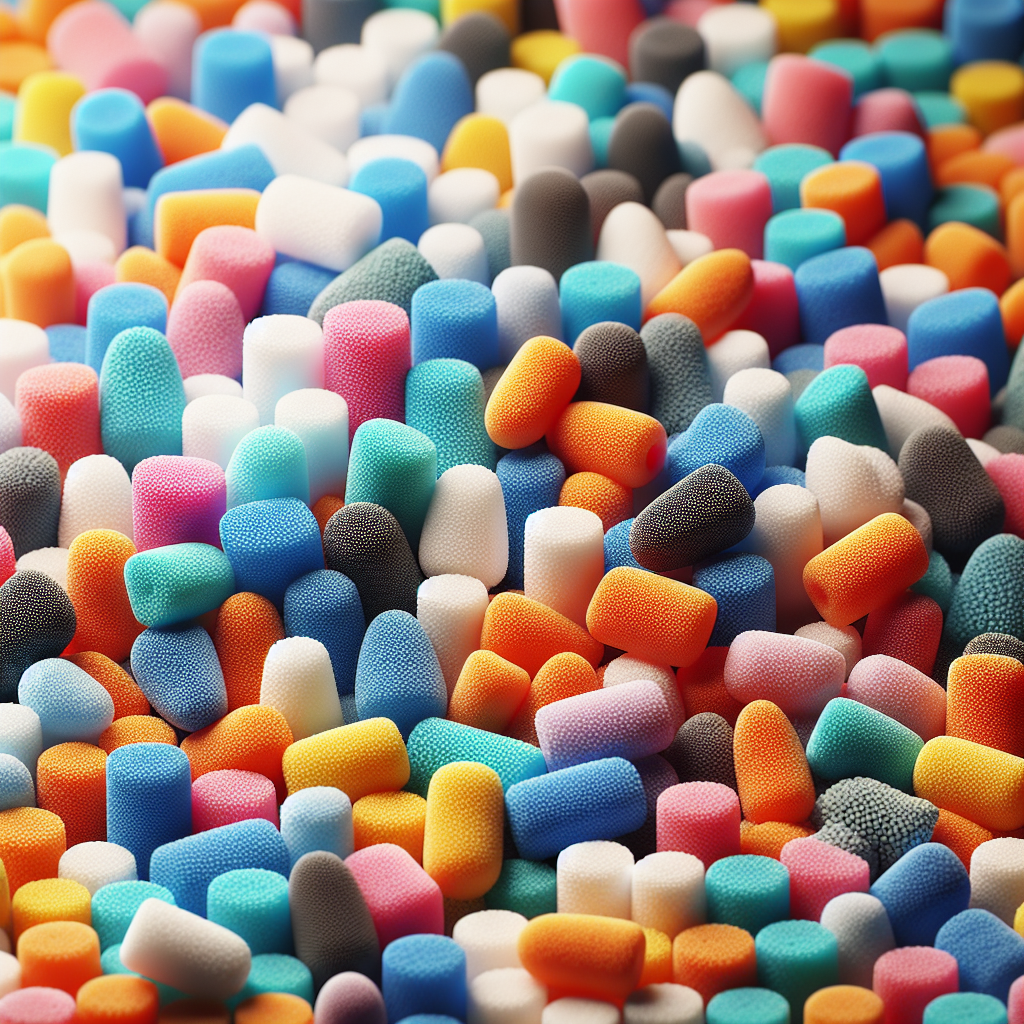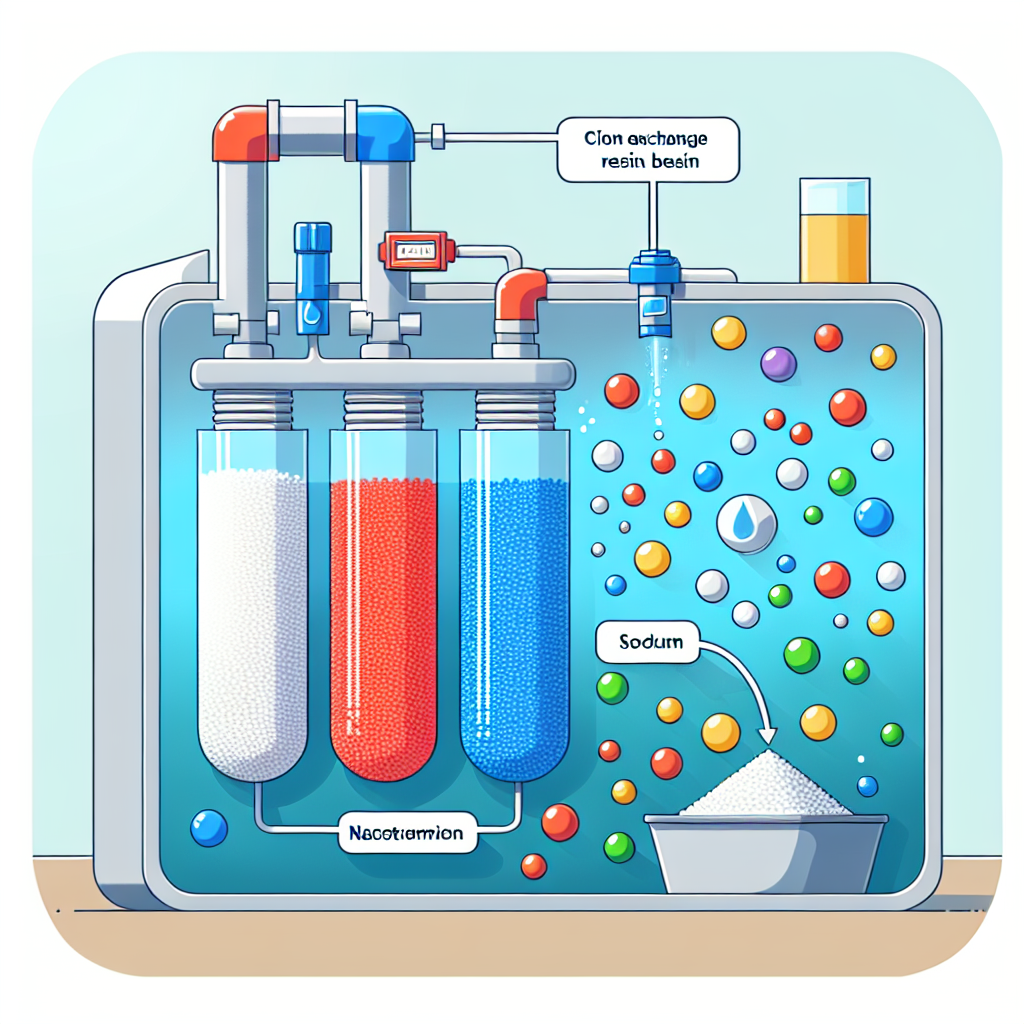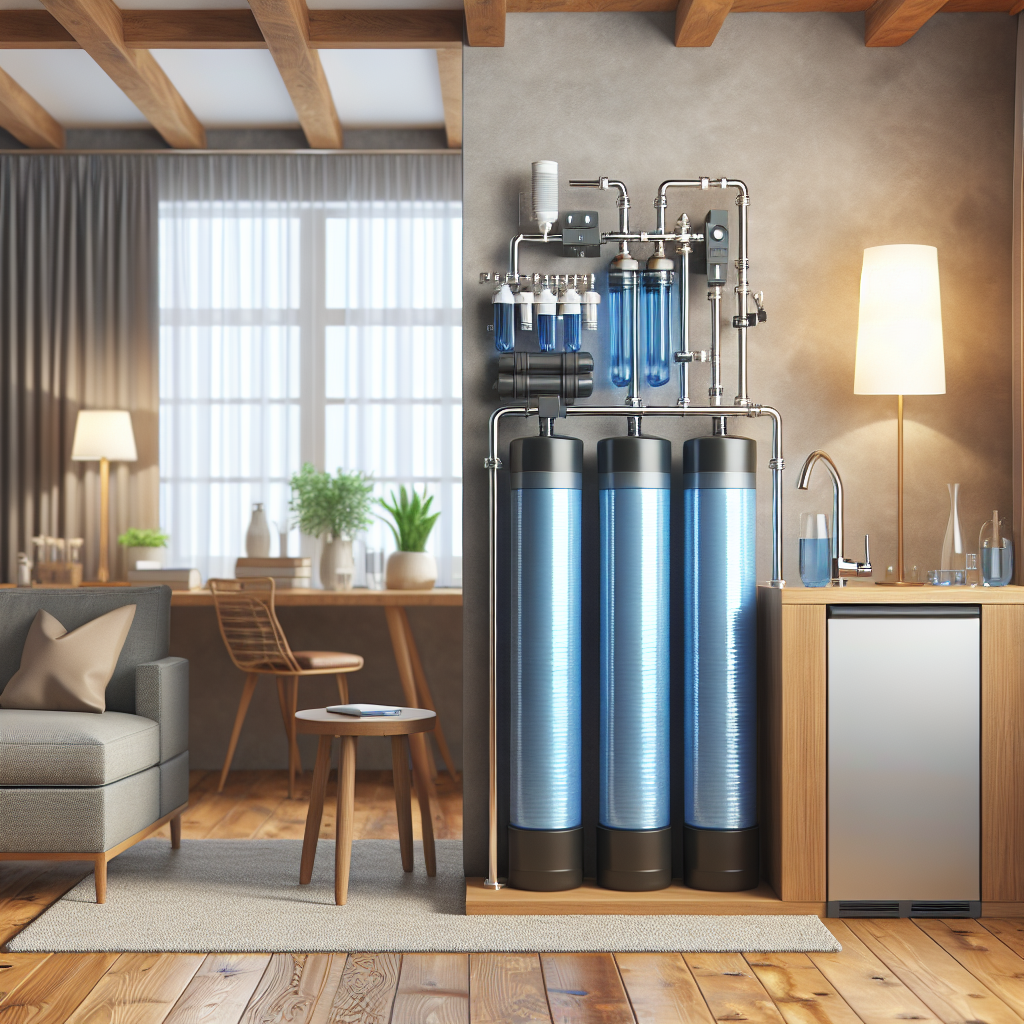Understanding Ion Exchange: The Science Behind Water Softening
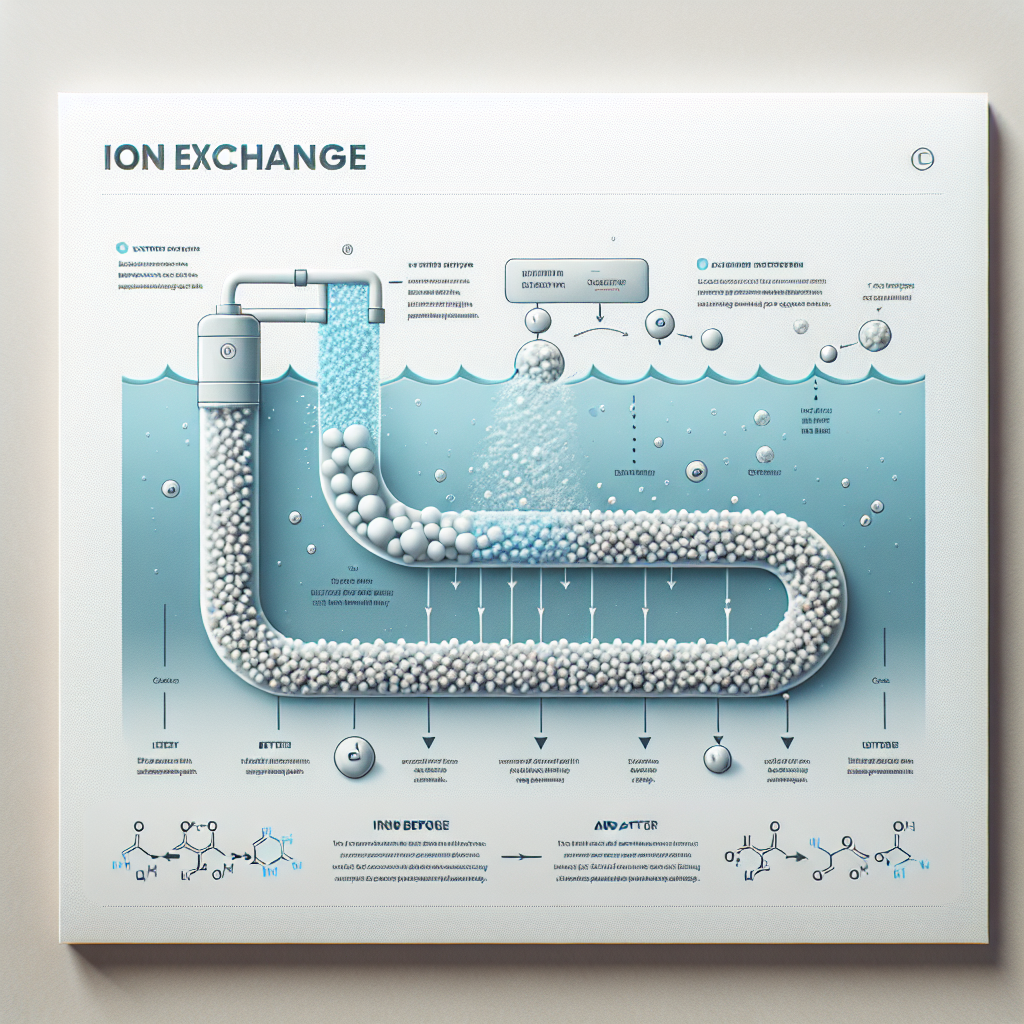
Understanding Ion Exchange: The Science Behind Water Softening
Introduction
Welcome to the fascinating world of ion exchange water softeners! If you’ve ever dealt with the frustrations of hard water think limescale buildup on your showerhead or that pesky soap scum that just won’t quit then you know how vital effective water treatment is. Enter the superhero of hard water solutions: the ion exchange process!
But what exactly is this magical process, and how does it transform your home’s water supply into a silky-smooth, scale-free oasis? In this post, we’ll dive deep into the science behind water softening systems, exploring everything from ion exchange resin types to the nitty-gritty of sodium ion exchange. Whether you’re a homeowner looking for a reliable residential water softener or an engineer interested in commercial applications, we’ve got you covered.
The heart of our discussion will be the remarkable ion exchange technology, which uses tiny beads (yes, beads!) to swap out undesirable minerals like calcium and magnesium for good old sodium. This not only reduces water hardness but also protects your plumbing from nasty scale buildup.
Quick Fact: Ion exchange systems are not just for homes; they’re widely used in industrial settings too, making them a versatile choice for all kinds of water purification challenges!
So grab your favorite beverage, settle in, and let’s embark on this journey through the science of ion exchange and discover how it can revolutionize your approach to hard water treatment!
What is Ion Exchange?
So, what exactly is ion exchange? At its core, ion exchange is a chemical process that swaps one type of ion for another in a solution. Think of it as a game of musical chairs, but instead of people, we have ions like sodium, calcium, and magnesium dancing around in your water!
This process is particularly important in water treatment, especially when dealing with hard water. Hard water contains high levels of minerals like calcium and magnesium, which can lead to all sorts of household headaches like limescale buildup on your faucets and appliances. An ion exchange water softener steps in here as the hero of our story.
Ion exchange systems are essential for both residential and commercial applications. They help reduce water hardness effectively, making them a popular choice for many households and businesses alike!
Why Does Ion Exchange Matter?
The significance of ion exchange in water softening systems cannot be overstated. By replacing undesirable ions (like calcium and magnesium) with more favorable ones (like sodium), these systems effectively lower the hardness level of water.
- Calcium Removal: Essential for keeping your pipes clear and your appliances running smoothly.
- Magnesium Removal: Helps prevent soap scum from forming because who wants that mess?
- Water Hardness Reduction: Makes your showers feel luxurious and your laundry softer.
This magic happens thanks to the use of specialized materials called ion exchange resins. These tiny beads are the real MVPs in the ion exchange process, capturing unwanted ions while releasing sodium ions into the water. It’s like having a tiny army working tirelessly to keep your water quality top-notch!
In summary, ion exchange isn’t just some fancy science term; it’s a practical solution for anyone dealing with hard water issues. Whether you’re looking at a compact water softener unit for your home or an industrial-sized system for large-scale operations, understanding how this process works will help you make informed decisions about your water purification system.
The Ion Exchange Process
Welcome to the science fair of water treatment! Here, we’re diving into the ion exchange process, the superstar behind every effective ion exchange water softener. Think of it as a high-stakes game of musical chairs, where ions are constantly swapping places to create a more balanced environment.
Mechanism of Ion Exchange
The ion exchange process is like a dance-off between ions. In this case, we have two main players: the hard water ions (like calcium and magnesium) and the softening ions (usually sodium). When hard water passes through an ion exchange resin, these two groups compete for attention. The resin prefers sodium ions, so when they meet calcium or magnesium, they kick them out and take their place. Voilà! You’ve just softened your water!
Cation Exchange Resin Overview
At the heart of our ion exchange water softener is the cation exchange resin. These little beads are like tiny sponges that soak up hard minerals. They’re typically made from polystyrene and are charged with sodium ions. When hard water flows through, those pesky calcium and magnesium ions get trapped in the resin while sodium ions are released into the water. It’s like a VIP lounge for soft water!
Sodium Ion Exchange Explained
Let’s break down what happens during sodium ion exchange. As hard water flows through your system, it interacts with these amazing ion exchange beads. The process can be summarized in three simple steps:
- Hard Water Entry: Hard water enters the system, bringing along its unwanted guests calcium and magnesium.
- Ionic Tug-of-War: The cation exchange resin grabs onto those hard minerals while releasing sodium ions into the mix.
- Soft Water Exit: The newly softened water exits your system, ready to tackle everything from dishwashing to bathing without leaving behind any limescale residue.
This whole process not only reduces water hardness but also helps in preventing limescale buildup in your pipes and appliances saving you from costly repairs down the line!
In summary, understanding how the ion exchange process works is crucial for anyone considering a home or commercial solution for hard water treatment. With an efficient **water filtration system**, you can enjoy softer skin, cleaner dishes, and appliances that last longer all thanks to this remarkable technology!
Water Softening Systems Overview
When it comes to tackling the pesky problem of hard water, water softening systems are the superheroes we never knew we needed. They swoop in to save our plumbing, appliances, and skin from the clutches of calcium and magnesium villains. Let’s dive into the different types of these systems and how they work their magic!
Types of Water Softeners
There are a few main players in the water softening arena:
- Salt-based water softeners: These bad boys use an ion exchange process, swapping out those hard-water ions (calcium and magnesium) for sodium ions. Think of them as the bouncers at a club only letting in the good stuff.
- Salt-free alternatives: If you’re looking for an eco-friendly water softener, these systems use different technologies, like template-assisted crystallization, to prevent limescale buildup without adding salt to your water supply.
- Dual-tank designs: For those who need continuous soft water without interruption, a dual-tank system can be your best friend. While one tank is busy regenerating, the other is ready to deliver softened water on demand.
Residential vs. Commercial Applications
The choice between residential and commercial water softeners often hinges on scale and demand:
- Residential water softeners: Typically compact units designed for home use, they effectively handle daily needs while being efficient with space.
- Commercial water softeners: Larger systems built to cater to high-demand environments like restaurants or factories think high-capacity resin tanks that can keep up with heavy usage.
Did You Know?
The average household can save up to 30% on energy costs by using an ion exchange water softener! That’s right softened water not only feels better but also helps your appliances run more efficiently.
The Benefits of Using Water Softening Systems
No one likes limescale buildup or spotting on dishes! Here’s why investing in a quality system is worth it:
- Calcium removal: Say goodbye to those stubborn deposits that cling onto your faucets and showerheads!
- Magnesium removal: No more itchy skin or dull hair after washing softened water feels luxurious!
- Overall efficiency: With less scale buildup, your appliances last longer and perform better win-win!
Components of an Ion Exchange Water Softener
When diving into the world of ion exchange water softeners, it’s essential to understand what makes these systems tick. Think of an ion exchange water softener as a superhero squad, each component playing a crucial role in the battle against hard water. Let’s break down these components:
Ion Exchange Resin Types and Functions
The heart of any ion exchange system is the ion exchange resin. These tiny beads, often made from polystyrene, are like sponges for ions. They come in two main types:
- Cation Exchange Resin: This is your go-to for removing calcium and magnesium ions from hard water. It swaps these pesky minerals with sodium ions, effectively softening the water.
- Anion Exchange Resin: While not always part of traditional water softeners, this resin can target unwanted anions like sulfates and nitrates, providing a more comprehensive treatment solution.
High-Capacity Resin Tank Features
The high-capacity resin tank is where all the magic happens. It holds the ion exchange resin and allows for efficient processing of large volumes of water. Key features include:
- Durable Construction: Built to withstand pressure and corrosion, ensuring longevity.
- Compact Design: Many modern units come in compact designs, making them suitable for residential or commercial spaces without taking up too much real estate.
- Dual-Tank Design: For those who need continuous operation, some systems feature dual-tank designs that allow one tank to regenerate while the other processes water.
Automatic Regeneration System Details
An automatic regeneration system is like having a personal assistant for your water softener. It ensures that your system regenerates at optimal times based on water usage patterns. Here’s why it’s essential:
- Saves Time: No need to manually initiate regeneration; it happens automatically!
- Optimizes Performance: Ensures that your system is always ready to tackle hard water without interruption.
- Customizable Settings: Many systems offer customizable hardness settings, allowing you to fine-tune based on specific needs.
The combination of these components creates an efficient and effective solution for hard water treatment. Understanding how they work together can help you select the best residential or commercial water softening system for your needs!
The Benefits of Ion Exchange Water Softeners
When it comes to tackling hard water, an ion exchange water softener is like having a superhero in your plumbing system. Let’s dive into the benefits that make these systems the go-to choice for both residential and commercial applications.
Water Hardness Reduction Effectiveness
First off, let’s talk about the main mission of any water softening system: reducing water hardness. Ion exchange technology is exceptionally effective at this, thanks to its use of cation exchange resin. This resin works by swapping out pesky calcium and magnesium ions (the culprits behind hard water) for sodium ions. The result? Significantly softened water that can improve everything from your skin to your appliances.
Limescale Removal and Scale Prevention Systems
If you’ve ever battled with limescale buildup on faucets or in appliances, you know it can be a real pain. An ion exchange water softener not only reduces hardness but also helps in limescale removal through its scale prevention system. By keeping those troublesome minerals at bay, you extend the lifespan of your plumbing fixtures and appliances talk about a win-win!
Eco-Friendly Water Softening Options
In an age where sustainability is key, many modern ion exchange systems offer eco-friendly options. While traditional salt-based systems rely heavily on sodium chloride, newer models focus on minimizing environmental impact. Some even feature a salt-free alternative to ion exchange that uses innovative technology to condition water without adding sodium back into the system. This is particularly appealing for those looking to maintain an eco-conscious home or business.
With customizable hardness settings available in many systems, you can tailor your hard water solution to fit your specific needs whether you’re dealing with stubborn industrial applications or just trying to keep your home sparkling clean.
Applications of Ion Exchange Technology in Various Settings
Ion exchange technology isn’t just a fancy term thrown around in water treatment circles; it’s a versatile powerhouse that can tackle water hardness in various settings. Let’s dive into how ion exchange water softeners are transforming the way we manage hard water across different environments.
Residential Water Softening Solutions
In the cozy confines of our homes, an ion exchange water softener can work wonders. These systems are designed to combat the pesky effects of hard water, which can lead to limescale buildup on faucets and appliances. With options like compact water softener units and whole house water softeners, homeowners can enjoy:
- Improved appliance lifespan no more dishwashers dying young!
- Smoother skin and softer laundry because who doesn’t want to feel like a million bucks?
- Customizable hardness settings to suit specific household needs.
Industrial Water Softeners and Their Roles
When it comes to industrial applications, ion exchange technology steps up its game. Industries such as manufacturing, food processing, and power generation rely on high-capacity resin tanks for efficient hard water treatment. Here’s why:
- Scalability: Industrial setups often require dual-tank designs for continuous operation without interruptions.
- Enhanced product quality: Softened water ensures that products meet stringent quality standards.
- Cost efficiency: Reducing limescale leads to lower maintenance costs on equipment.
Customizable Hardness Settings in Ion Exchange Systems
No two applications are alike! That’s where customizable hardness settings come into play. Whether you need a residential solution or an industrial-grade system, ion exchange technology offers flexibility:
- Homeowners: Adjust your settings based on seasonal changes or personal preferences.
- Industries: Tailor your system for specific processes that demand different levels of softness.
The versatility of ion exchange technology is one of its strongest suits. From providing a reliable home water softening solution to ensuring that industries run smoothly without the hiccups caused by hard water, this innovative method proves essential across various settings. So whether you’re dealing with pesky hard water at home or managing large-scale operations in an industrial environment, there’s an ion exchange solution tailored just for you!
Challenges and Considerations in Ion Exchange Systems
-
< li >Maintenance requirements and costs< / li >
< li >Impact on overall water quality< / li >
< li >Potential environmental considerations< / li >
ul >
section >
section >


